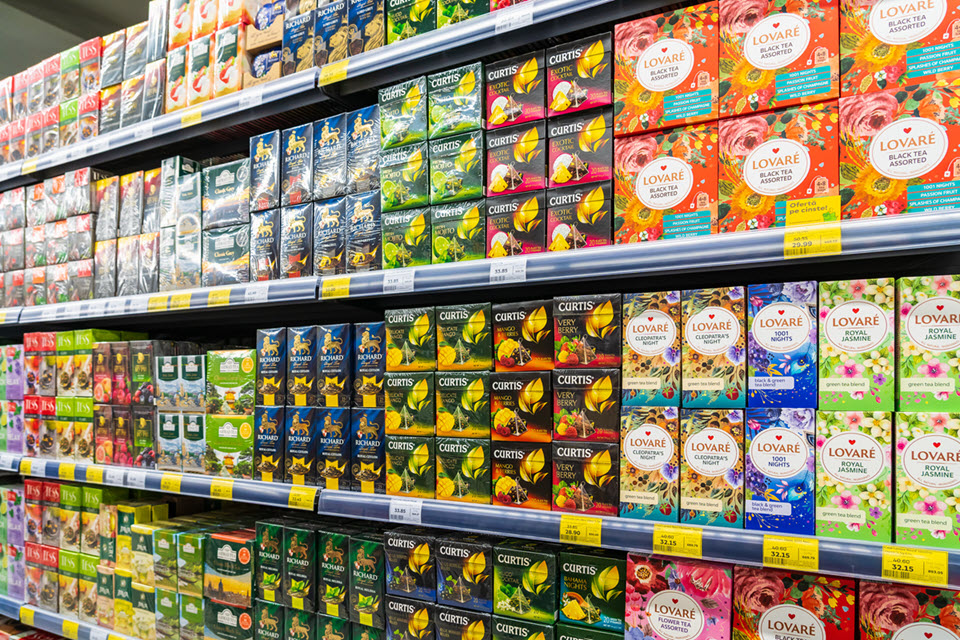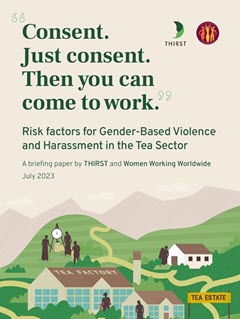Episode 136
| Retail Sales Projections are Ho-Hum for the Holidays: Sales growth adjusted for inflation will be in the single digits, the lowest growth rate since 2018
| UC Davis Global Tea Institute Launches a Training Program for Tea Professionals
PLUS | More than 30,000 tea workers and supporters, mainly from the indigenous Bataga Community living in Ooty, Kothagiri, and Coonoor in the Nilgiris mountains of South India, participated in a silent hunger protest on behalf of farmers. The demonstrations ended last week, but only after the High Court took cognizance of the petitions that urgently plead the case for fixing a minimum price for green leaf. Aravinda Anantharaman reports.
Tea News for the week ending Sept 29
Powered by RedCircle

Retail Sales Projections are Ho-Hum for the Holidays
By Dan Bolton
North American consumers are “trading down,” leading to projections of ho-hum holiday sales based on pre-season surveys.
“Consumers are skittish, and retailers will have to be on their toes, focused on making sure the products and the prices are right,” writes Forbes, quoting marketers who anticipate “a modest increase in sales with narrowing margins.”
Adjusted for inflation, Bain & Company projects real US holiday retail sales in the low single-digits, well below the 10-year average and the lowest since the financial crisis.
Deloitte writes that holiday sales will likely increase between 3.5% and 4.6% in 2023. According to Deloitte, E-commerce holiday sales are projected to grow between 10.3% to 12.8% compared to the 2022 season.
Overall, Deloitte projects holiday sales will total $1.54 to $1.56 trillion from November to January. In 2022, holiday sales grew by 7.6% and totaled $1.49 trillion in the same period, according to the U.S. Census Bureau.
Deloitte forecasts e-commerce sales will grow to between $278 billion and $284 billion this season. A survey by Bankrate reveals that 39% of holiday shoppers plan to do most of their shopping online, while 23% plan to shop in person.
Bankrate found that 50% of holiday shoppers will begin before Halloween, with 12% starting as early as September. November is the busiest month for shoppers, but 13% percent say they don’t shop until December, according to Bankrate.
More than half (54%) say they feel financially burdened this year, with 33% saying inflation will change how they shop. Another 25% expect higher prices to strain their budgets, and 13% attribute their shopping stress to concerns they will be forced to spend more than they’re comfortable spending.
“While September feels early to be talking about holiday shopping, it’s very smart to start thinking about it well ahead of time,” writes Bankrate.
BIZ INSIGHT – Sales of conventional hot tea are flat. In contrast, globally, sales of functional teas are growing at a faster 6.4% pace that is expected to accelerate through 2027. The market for herbal teas will add $885 million in sales by 2027, according to Technavio.
“Millennials and baby boomers are expected to be the major customer base for the herbal tea market as they make up the majority of the current workforce,” according to Technavio.
Shifting consumer preference towards online sales channels positively impacts the growth of the global herbal tea market, writes Technavio. Demand for herbal teas is expected to increase as consumers become more health conscious. Online channels offer consumers a wide range of products at discounted prices,” according to Technavio.

Episodes 1-49
Episodes 50-96
Episodes 97-136


